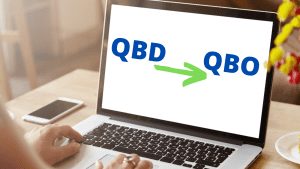What does good look like? Business owners must ask this question when using QuickBooks for their accounting software. Yes, this software is the industry standard for closely held businesses. And yes, its flexibility and features are impressive. But as a business owner, you want assurance that your investment in QuickBooks was solid. The following real-world mistakes from QuickBooks users are a starting point for business owners to ask, “What does good look like?”.
Mistake #1 – Excessively using the Miscellaneous/Other account.
This general ledger account can easily be compared to the “junk drawer in the kitchen.” This “drawer” is the only place where we toss “homeless” small items because A. we don’t have the time to find the proper place, B. we tell ourselves that we’ll take care of it later, or C. we don’t know where it belongs. The Miscellaneous or Other account in the general ledger is a distant cousin of the “junk drawer” with the same DNA. The QuickBooks user may tell him/herself that they will temporarily use this account, which is acceptable if a correcting entry is completed timely. However, we all have limited time to retrace our steps. A business owner will generate their financial statements and review results at the end of the month, quarter, or (oh no!) year. A Miscellaneous “drawer” is the last area a business owner wants to clean up at year-end.
Mistake #2 – Not tying payroll expense to quarterly and annual payroll tax returns.
When a business owner outsources their payroll services, they have decided that the provider is the expert in processing paychecks. The payroll service provider will submit to the business owner various reports throughout the year. After each pay period, the business owner feels confident they have made all QuickBooks entries accurately. It is now yearend, and the financial statements should be “clean.” Is it? The business owner may be under or over-reporting expenses by not comparing year-end amounts against the payroll tax returns.
Mistake #3 – Lumping payments in one expense account.
Creating a meaningful chart of accounts is an important first step in setting up a company file in QuickBooks. This is very easy for those businesses that have been operating for some time. History helps to determine which general ledger accounts should be used. For brand-new enterprises, using the sample chart of the chart of account menu within QuickBooks is an excellent start. If the chart of accounts doesn’t have the accounts that best represent a transaction, and again, time is limited, it’s not uncommon to use the next best thing. For example, a business owner has a general ledger account called “Maintenance & Repairs.” It does sound self-explanatory, right? This account is for costs related to maintaining or repairing some items in the business. The next question that should arise is, “What item?” Some examples include equipment, buildings, or computers. Why is this important to highlight? A business owner may not quickly identify a source or pattern in cost unless they dig through the filing cabinet for the hard copy invoice. So, in this example, it would be best to have more than one general ledger account to minimize research time and quickly understand the reason for a spike in cost.
Time is an asset that the business owner can quantify. Why should it be spent on researching and correcting accounting errors? The business owner wants to know that his or her QuickBooks data is clean and available without delay. Accounting services provided by LSL CPAs & Business Advisors can answer the nagging question, “What does good like?”.
By Pamela Ballan




